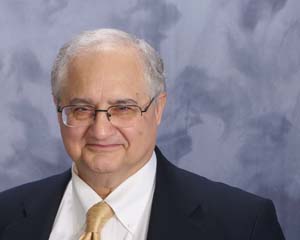Introduction to Distance Education: Theorists and Theories –Michael G. Moore
By Dr. Farhad (Fred) Saba
Founder, Distance-Educator.com
Michael Grahame Moore is Professor Emeritus of Education at Pennsylvania State University. He obtained a Bachelors of Science degree in economics from the University of London in 1959. Upon graduating he taught history and geography, as well as adult education courses. In 1963, Moore went to Africa as an education officer to assist with one colony’s transition to independence. During his seven year stay in Africa, he also taught at the University of East Africa, and worked in the Adult Education Department. In 1969 Moore began graduate studies at the University of Wisconsin-Madison, where he worked with Charles Wedemeyer as a research assistant. He received his Ph.D. from University of Wisconsin – Madison in 1973. In 1977, after 3 years as an Assistant Professor at St. Francis Xavier University in Nova Scotia, he returned to UK to work in academic and managerial roles at the Open University for eight years. In 1985 he came back to the US and began working as Professor of Education for Pennsylvania State University in the Department of Learning and Performance Systems. In the same year, he organized the First Annual Distance Education Conference in Madison, Wisconsin. In 1986, he established The American Center for Study of Distance Education, and in 1987 , he began editing and publishing the first distance education journal in the US: The American Journal of Distance Education. In 1988 he organized the first American research symposium on distance education in the US.
Moore’s (1973, 1983) theory of transactional distance broadened the horizon for the field and opened the way to conceptualizing distance as a variable that changes over time as an instructional session progresses. This implied that distance in education is a psychological construct as well as a geographic one. In his early studies as well as later explanations of the theory of transactional distance Moore (2013) stated that distance in education, or transactional distance, is a psychological construct that depends on three variables (“macro factors”) of dialog, structure and autonomy.
“Dialogue describes the extent to which, in any educational programme, learner and educator are able to respond to each other. This is determined by the content or subject matter which is studied, by the educational philosophy of the educator, by the personalities of educator and learner, and by environmental factors, the most important of which is the medium of communication” (Moore 1983, p. 157). And Structure is a measure of an educational programme’s responsiveness to learner’s individual needs. It expresses the extent to which educational objectives, teaching strategies and evaluation methods are prepared for, or can be adapted to the objectives, strategies, and evaluation methods of the learner. In a highly structured educational programme, the objectives and the methods to be used are determined for the learner and are inflexible. (Moore, 1983 p. 157)
Autonomy refers to the extent to which learners decide on certain factors such as “what to learn, how to learn, and how much to learn.” (Moore 2013, p 68). Moore posited that adult learners tend to set their own learning goals and pursue achieving such goals on their own. He set forward two kinds of autonomy – emotional and instrumental- and defined them as follows:
Instrumental independence involves the ability to undertake an activity, including learning, without seeking help; emotional independence is the capacity to pursue the activity without seeking reassurance, affection or approval in order to complete it. The drive to achievement is derived from a need for self-approval. (p. 162).
These design factors, however, can be implemented in educational organizations with a management structure (Educational Systems Level) that is conducive to personalized instruction, since “distance” in education differs for each individual learner at each moment in time. As we will demonstrate below, each individual learner has a certain need for structure, dialog and autonomy; and as such, the one-size-fits all lecture is woefully inadequate to meet the personal needs of the individual learner.
Realizing that dialog structure and autonomy determine the degree of separation between the learner and the educator in time and space, Moore defined transactional distance as a function of these three variables. He explained: “In a programme in which there is little structure, and dialogue is easy, interaction between learner and teacher permits very personal and individual learning and teaching.”
Using the variables dialogue and structure, Moore proposed four possible sets to classify individual learning programmes:
– D – S 1. Programs with no dialogue and no structure
– D + S 2. Programs with no dialogue but with structure
+ D + S 3. Programs with dialogue and structure
+ D – S 4. Programs with dialog and no structure
Viewing distance and time as variables that can and should change depending on the requirements of the instructor for structure and the needs of the learner for dialog, has major theoretical and practical ramifications.
REFERENCES
Moore, M. G. (1973). Towards a theory of independent learning and teaching. Journal of Higher Education, 44(9), 661-679.
Moore, M. G. (1983). The individual adult learner. In M. Tight (Ed.), Adult learning and education (pp. 153–168). London: Croom Helm
Moore, M. G. (2013). The theory of transactional distance. In M. G. Moore (Ed.) Handbook of distance education (3rd ed., pp. 66-85). New York, NY: Routledge.








